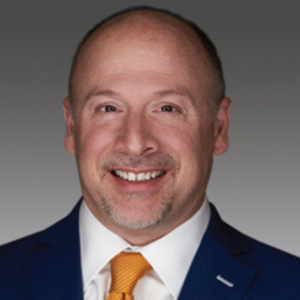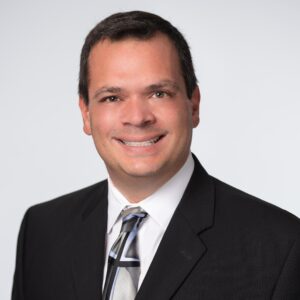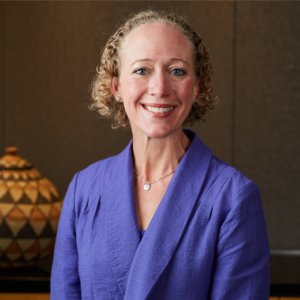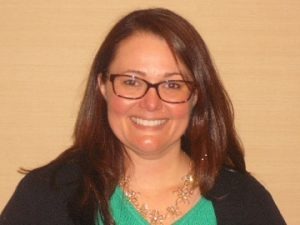Quality Initiatives: Are Nursing Homes Getting Better?
|
| November marks the first anniversary of the national rollout for the federal Centers for Medicare and Medicaid Services’ (CMS) Nursing Home Quality Initiative (NHQI). Nursing homes in every state are using resources they’ve never had before-resident data feedback, collaborative assistance from federal government healthcare quality experts-to work on upgrading their resident care performances. Leaving aside the public reporting requirements involved-of which more later-this is the quality improvement (QI) system that nursing homes have long been asking for, as opposed to the “gotcha policing” of the OBRA survey system. Some of the results (or nonresults) of that system were taking heat at press time from the likes of Senator Charles Grassley (R-Iowa), the General Accounting Office, the House Ways and Means Committee, and the Consumers Union, with nursing homes again being pilloried in the popular press for substandard performance. Will the NHQI point to a way out? Recently, Sylvia Gaudette Whitlock, director of government affairs for the American Health Quality Association (AHQA)-the membership organization for the state Quality Improvement Organizations (QIOs) that are spearheading this effort-provided an update to Nursing Homes/Long Term Care Management Editor-in-Chief Richard L. Peck. QIOs started 30 years ago as quality monitoring agencies for physicians and, later, hospitals. What has been their principal challenge in adjusting from physician and hospital QI to long-term care QI? Whitlock: For the most part, the QI challenges in this setting are the same as those in the hospital setting-staffing, workload, the need for greater leadership and staff empowerment, etc. Every provider of healthcare has a system for doing so, and every system has trigger points for doing things right-or not. QIOs focus on systems, and that is no different in the long-term care setting than anywhere else. One challenge, though, was that not many nursing homes knew who, or what, the QIOs were. Furthermore, the nursing home industry, as a whole, is not accustomed to working with entities funded by the federal government that are not regulatory in nature. So the QIOs and the nursing homes have had to get to know one another and establish a new working relationship. All the QIOs have hired people with nursing home experience, and they have all taken a very flexible approach in working with nursing homes in a collaborative relationship. One additional barrier that the nursing home industry has faced is the lack of evidence-based best practices for their setting of care. Unlike for hospital care, there is not much research on processes and practices that yield optimal nursing home outcomes. Clinicians in this field rely largely on expert consensus and guidelines. Not only are the QIOs sharing their expertise in changing systems of care, they are compiling the available scientific information about care practices in this field to help facilities choose practices that might work best for their residents. |
| What is the current “scorecard” in terms of number of QIOs and nursing homes directly involved in QI projects? Whitlock: There is a QIO in every state, the District of Columbia, and the U.S. territories. Each is working with 10 to 15% of their nursing homes as “identified participants” in this initiative. The QIOs are directly responsible for helping these homes assess their systems of care and determine how they can improve, based on the Quality Measures (QMs) that the QIO and other stakeholders have determined are most appropriate for that state. In general, the participating nursing homes in each state are asked to select three to five QMs on which to work to demonstrate improvement both by the participants themselves and statewide in general. [Editor’s note: For the full list of the current QMs, see sidebar.] Which particular QMs are these projects tending to focus upon? Whitlock: The most popular QMs (in descending order) are: pain (both chronic and post-acute), with projects underway in virtually every state; pressure ulcers, involving SNFs in 40 states; ADL decline, 17 states; and restraint use, 15 states. How can nursing homes best work with QIOs on these initiatives? Whitlock: Nursing homes that will be the most successful in this initiative:
The key here is to develop a system that supports the staff working as a team. Nursing homes have problems when they focus on delivering care resident-by-resident and then quickly blame someone when something goes wrong. It’s better to have a system that realizes that everyone who comes in contact with the resident, not just the DON, is responsible as a team, and which prompts them to do certain things in certain ways at the right time. This kind of system can be especially helpful in situations where hands-on staff is turning over regularly and is in constant need of training, as we find in many nursing homes. A proper system will do this job, and might even help reduce turnover. What about the majority of facilities that are unable to become directly involved with a QIO? Whitlock: Each QIO is required to make NHQI training materials available to every Medicare/Medicaid participating home in its state. This is done via the Web or by mailing the information to homes without the necessary computer capability. Additionally, every QIO is holding several group meetings, workshops, or collaboratives around the state to educate staff about assessing and improving their systems of care. These workshops are designed to be very practical, and nursing homes are encouraged to share their experiences (both successes and failures) and learn from one another. A few examples of recent achievements? Whitlock: I’ll offer three: 1. A nursing home in Florida (which was a pilot state in 2002) discovered that 21% of its patients were reported as suffering from chronic, unresolved pain. They didn’t know this prior to the reporting effort, and they began working with Florida Medical Quality Assurance, Inc. (the Florida QIO), which helped them analyze the system they were using to assess and manage residents’ pain. They reviewed charts and worked with staff to analyze where their current system was breaking down. Rather than trying to invent an entirely new system, they were able to identify and fix their existing system’s weak spots, and they learned how to continuously monitor their own improvement. By November of last year, when the NHQI was launched nationally, this facility’s reported number for chronic pain was down to 6.6% of residents and, as of June 2003, it was down to 3.25%. 2. Both Utah and Nevada have improved their pain measures since the national rollout. Based on data made available in June 2003, the trends for these measures in these states are as follows:
3. While using materials and assistance provided by the state’s QIO, an Oklahoma facility discovered that its number of PRN medications for pain was disturbingly high; this can be an indication that the pain management system in place is insufficient or otherwise not working properly. The facility developed an analytical process for identifying and assessing pain in its residents, and the facility was able to figure out where the system needed to be improved. The facility has reduced the number of PRN medications used for residents’ pain and now has a better pain management system in place. What about the controversy in some quarters over the accuracy and fairness of the QMs, as they’re reported publicly? Whitlock: We know that these measures are evolving. In fact, many people are not even sure the word “measures” is a fair description of what they’re intended to do, and some think that it’s not fair to publicly report them. (And it’s worth noting that, at least until this October, when home healthcare was expected to kick in, nursing homes were unique in having their QMs publicly reported; hospitals and physicians have never been required to do this.) As a practical matter, though, we think that the QMs are an excellent jumping off point for initiating and monitoring a QI project. They’re very helpful in focusing on cleaning up MDS data, for example, and they’re essential in teaching facilities how to use QI numbers. How does the initiative relate, if at all, with the OBRA survey process? Whitlock: The NHQI (and specifically the work of the QIOs in the initiative) is not related to the survey and certification process. What are the plans for the immediate future for the NHQI? Whitlock: The QIOs plan to continue their work with nursing homes for years to come and have been pleased with how many nursing homes have been participating in this effort. We fully expect that QI methods will become more understood and practiced in this setting, and that research will contribute more evidence-based practices for these clinicians to use. As I suggested earlier, the CMS QMs for nursing homes will evolve to become more precise. The potential for improving care in nursing homes is great, and the QIOs are very pleased to be their partners in the NHQI. What is good contact information for nonparticipating nursing homes to gain access to information about QIOs and projects in their states? Whitlock: For further information, the AHQA Web site [www.ahqa.org] has a “QIO Locator” arranged by state, as well as a “QIO Nursing Home Quality Initiative Contacts” section arranged by state. Anyone interested should go to his/her QIO’s Web site, call the QIO, or just e-mail one of the listed contacts. For further assistance, they can contact me at swhitlock@ahqa.org, my colleague Dave Adler at dadler@ahqa.org, or phone (202) 331-5790. NH |
| To comment on this article, please send e-mail to 2peck1103@nursinghomesmagazine.com |
I Advance Senior Care is the industry-leading source for practical, in-depth, business-building, and resident care information for owners, executives, administrators, and directors of nursing at assisted living communities, skilled nursing facilities, post-acute facilities, and continuing care retirement communities. The I Advance Senior Care editorial team and industry experts provide market analysis, strategic direction, policy commentary, clinical best-practices, business management, and technology breakthroughs.
I Advance Senior Care is part of the Institute for the Advancement of Senior Care and published by Plain-English Health Care.
Related Articles
Topics: Articles , Facility management , Regulatory Compliance











